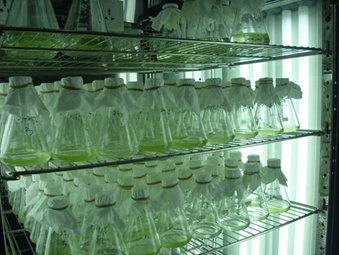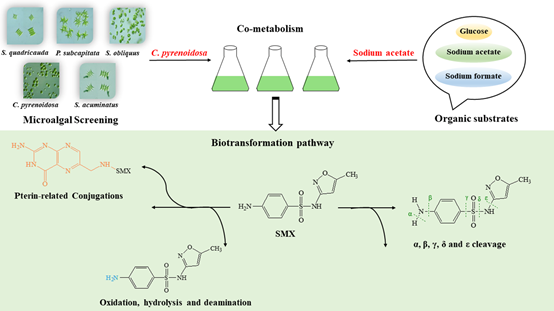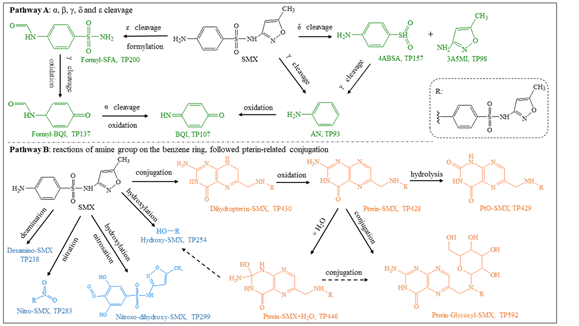Xiong et al. found that the biodegradation of SMX by C. pyrenoidosa can be accelerated in a co-metabolic system.
Qian Xiong, a joint PhD student of Professor Guang-Guo Ying at SCNU Environmental Research Institute (SERI) and Guangzhou Institute of Geochemistry, Chinese Academy of Sciences, recently published a research article titled “Co-metabolism of sulfamethoxazole by a freshwater microalga Chlorella pyrenoidosa” in Water Research.

Sulfamethoxazole (SMX), a sulfonamide antibiotic, is one of the most widely used drugs for human and veterinary medicine due to its ability to inhibit bacteria and protozoa. The extensive application of SMX and the low removal efficiency of SMX in wastewater treatment plants has resulted in its frequent detection in surface water and groundwater with concentrations ranging from ng/L to μg/L. Microalgae-mediated biodegradation of antibiotics has recently gained increased attention from international scientific community. However, limited information is available regarding microalgae-mediated biodegradation of SMX in a co-metabolic system.

Xiong et al. investigated the biodegradation of SMX by C. pyrenoidosa in a sodium acetate co-metabolic system, the intermediates of SMX were identified using ultra performance liquid chromatography coupled to quadrupole time-of-flight mass spectrometry (UPLC-QTOF-MS), and the possible transformation pathways of biodegradation were proposed. The results showed that the highest SMX dissipation (14.9%) was detected by C. pyrenoidosa after 11 days of cultivation among the five tested algal species in the absence of other carbon sources. The addition of sodium acetate (0-8 mM) significantly enhanced the dissipation efficiency of SMX (0.4 μM) from 6.05% to 99.3% by C. pyrenoidosa after 5 days of cultivation, and the dissipation of SMX followed the first-order kinetic model with apparent rate constants (k) ranging from 0.0107 to 0.9811 d−1. Based on the results of mass balance analysis, biodegradation by C. pyrenoidosa was the main mechanism for the dissipation of SMX in the culture medium. Fifteen phase I and phase II metabolites were identified, and subsequently the transformation pathway was proposed, including oxidation, hydroxylation, formylation and side chain breakdown, as well as pterin-related conjugation. The majority of metabolites of SMX were only observed in the culture medium and varied with cultivation time. The findings of the present study showed effective co-metabolism of a sulfonamide by microalgae, and it may be applied in the aquatic environment remediation and wastewater treatment in the future.

The published article is listed as follows:
Xiong, Q., Liu, Y.-S., Hu, L.-X., Shi, Z.-Q., Cai, W.-W., He, L.-Y. and Ying, G.-G. (2020) Co-metabolism of sulfamethoxazole by a freshwater microalga Chlorella pyrenoidosa. Water Research, 175:115656. https://doi.org/10.1016/j.watres.2020.115656